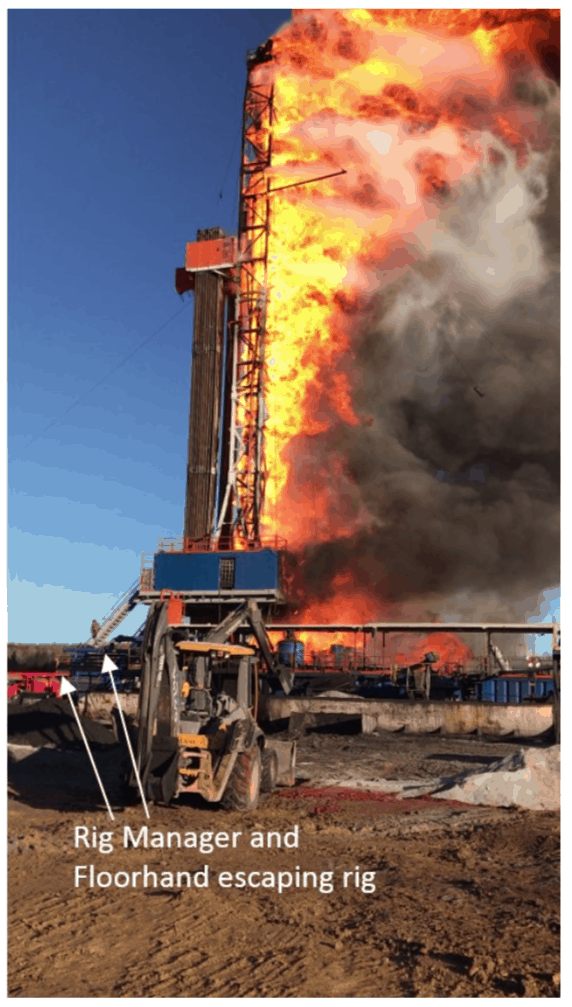Compassionate Root Cause Analysis

What is Compassionate Root Cause Analysis?
What is compassionate root cause analysis? Let’s start by defining compassion:
Merriam-Webster Dictionary
Compassion: Sympathetic consciousness of others’ distress together with a desire to alleviate it.
Compassionate root cause analysis doesn’t place blame or look to find who made a mistake. Rather, compassionate root cause analysis looks to help those in distress understand what happened and what they can do to prevent anyone else from having to suffer through a similar mistake because ANYONE could have had the same experience.
Fatal Accidents
Have you known anyone involved in a fatal accident? A fire, explosion, collision, or construction accident with multiple injuries and fatalities. What commonly happens after this type of accident? Often, senior managers look for someone to blame. That person (usually lower in the organization) is punished, fired, or even criminally prosecuted.
But this isn’t all that happens. Often, people who made a mistake that led to the accident blame themselves for the injuries and deaths of others. They become depressed. They carry a heavy burden of blame for the remainder of their life.
All of this blame happens without compassionate root cause analysis. The deeper causes of the accident aren’t considered before blame is attributed to the individuals involved.
I have personally met and discussed accidents with those that blamed themselves and carried a heavy burden. In some cases, I was able to have the “guilty parties” attend a TapRooT® Root Cause Analysis Course. What did they learn?
First, they learned to develop a SnapCharT®. That helped them get a much clearer picture of what went wrong. A better picture than they had after being “investigated” in a blame-oriented system.
Second, they learned to identify Causal Factors. This often helped them see that they alone were not responsible for the complete accident. Yes, they had made mistakes. But often, several other mistakes allowed the accident to happen.
Perhaps most importantly, they learned that there was much more than blame as the root causes of the accident. They could identify system-related root causes that led to the actions they had taken. There were reasons that they had made the mistakes. And others placed in their situation could have made similar mistakes. Thus, blame was not the answer. The answer was through analysis of the root causes of all the Causal Factors.
Finally, they discovered that the blame-oriented investigations had not resulted in effective corrective actions. They could now find effective corrective action identified for the root causes identified by using the Root Cause Tree® diagram.
They left with a whole new feeling. Yes, they had made mistakes, but they weren’t alone responsible for the accident. Some of the heavy burdens had been lifted from their shoulders. And they could now see what needed to be done to keep similar accidents from happening.
Looking deeply into the real root causes of accidents, incidents, and other serious problems and developing effective solutions is what compassionate root cause analysis is all about.
Responsibility
You may get the impression that compassionate root cause analysis is all about removing personal responsibility from those that cause an accident. That is far from the truth. Compassionate root cause analysis is about finding effective corrective actions that will improve performance and keep future accidents from happening.

Blame and discipline may be needed in rare cases of deliberate, intentional actions beyond the accepted performance norm. But what we often find is that deviation from the rules is a part of a broader problem – Normalization of Deviation.
Here are a couple of articles that help explain the concept of Normalization of Deviation:
- Stopping the Normalization of Deviation with the Normalization of Excellence – How Admiral Rickover Did It
- Normalization of Deviation: Can One Bad Apple Spoil the Whole Bunch?
Therefore, mistakes (Causal Factors) that led to an accident have reasons why they happened. Reasons that can be fixed.
Learning About Compassionate
Root Cause Analysis

How do you learn to find real root causes rather than placing blame? You attend a TapRooT® Root Cause Analysis Course.
Here are my suggestions:
The course teaches the essential techniques of TapRooT® Root Cause Analysis in just two days. Click on the link above for the complete course outline.
2. 3-Day VIRTUAL TapRooT® Root Cause Analysis Training
The same material taught in the 2-Day TapRooT® Course above but taught in a live, virtual environment. Read more about how we developed this exceptional training HERE.
3. 2-Day Equifactor® Equipment Troubleshooting and TapRooT® Root Cause Analysis Training
If your root cause analysis is focused on equipment failures and improving equipment reliability, this is the course for you.
4. 5-Day TapRooT® Advanced Root Cause Analysis Team Leader Training
If you would like to learn the essentials PLUS the information you need for investigating major accidents, this is the course for you. This course teaches advanced information and provides practice using all the features in the TapRooT® Software.
This course tackles perhaps the toughest problem that management faces – improving human performance and stopping accidents caused by human error. Think that’s impossible? Then you need to attend this course.

If you would like to network with people who practice compassionate root cause analysis, you need to attend the Global TapRooT® Summit. Find out more about:
Don’t miss this chance to network with performance improvement experts and share best practices. REGISTER HERE.



